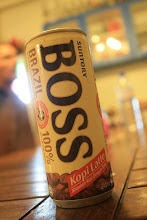
잠수 bridge.
Sometimes referred to as the the 반포대교 (Banpo Bridge) due to it's proximity, the 잠수교 (Jamsu Bridge) is the bottom span in the structure which crosses the Han River between 용산구 (Yongsan-gu) and 서초구 (Seocho-gu). The unique separation of the two bridges stems from the way they came to be. The 잠수교 (Jamsu Bridge) was not always the bottom span; before 1982, the 잠수교 (Jamsu Bridge) was the only span.
Today, half of the 잠수교 (Jamsu Bridge) is dedicated to bicycle and pedestrian use; while the 반포대교 (Banpo Bridge) is solely purposed for the heavy automobile traffic. In the rainy summer months, the 잠수교 (Jamsu Bridge) is occasionally submerged when the river swells. Perhaps for this reason, the 반포대교 (Banpo Bridge) was built on top.







































